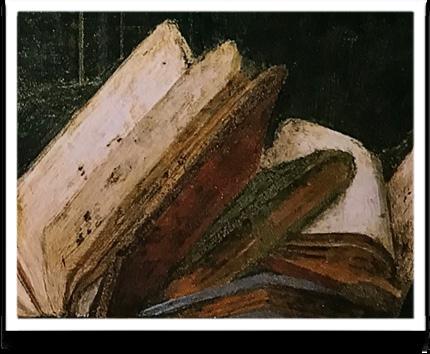
3 minute read
Books of Interest
John Dalla Costa
worked ceaselessly to embody in her entire being through every act and thought, an even deeper prayer of communion with the suffering and self-offering Christ.
It often escapes us that Jesus offered the Eucharistic sacrifice twice. In the cenaculum on Holy Thursday he consecrated the Eucharist. On Calvary during Good Friday he consummated it. With the Eucharistic bread and wine shared with his closest disciples Jesus founded the Church. The Eucharist offered on the cross was instead public, open to the vast skies and natural elements, and open to the gaze of any and all passers-by. It still remains so that while the prayer of consecration is of apex importance to Christians, the kenotic prayer of Jesus on the cross is universal, speaking to the heart of any human being whose heart is moved by compassion.
The enigmatic Jewish philosopher, Simone Weil embraced in full the teachings of Jesus, without ever formally converting. As she grew in mystical understanding, Simone ached to receive Holy Communion, yet she never crossed the threshold to become sacramentally included in the life of the Church. Despite this intentional hesitation, Simone achieved that rarest communion with the actual, crucified Eucharist. She came to cherish the sacrament in ways beyond that of many practicing Christians, without a lack for not receiving the consecrated host, as she
This kenotic understanding of prayer emerges carefully and beautifully in Maria Clara Bingemer’s book, Simon Weil. Mystic of Passion and Compassion. Using biographical details and Simone’s own writings, Bingemer tracks a life that applies rare intellect, and even rarer capacities of the heart, to bear with Jesus the cross of the world’s brutality and suffering. Simone was known from a young age to have tearful empathy for people suffering in distant corners from her world. She applied her considerable intelligence to study the available intellectual, political and economic solutions to the the world’s problems, only to find that any and every ideology eventually defaulted to its own often savage exclusions. An unexpected experience of the passion of Christ touched Simone mystically. Having been disappointed in her search for the truth, she found in Christ’s suffering the ultimate foundation for meaning, prayer and action.
After encountering Jesus, Simone chose immersion rather than conversion—an immersion in a holy communion of suffering to prove the redemptive truth of the cross by living it in solidarity with others. As Bingemer explains, “Only the mystery of Christ can explain the mystery of misery…Only through the incarnation of God, or kenosis, is it possible to shift the focus from oneself to those who are suffering, and to help them out from their lethal circumstances, for it is through the incarnation that Christ himself lives amidst our human misery.”
Simone enacted her Eucharistic prayer in the midst of the 20 th century’s complex cruelties from economic exploitation, vitriolic and violent patriotism, war and genocide. Bingemer calls Simone “an intellect wounded by compassion.” Trained in the most prestigious schools, Simone eschewed any privilege from her intellectual standing, instead undertaking many experiences— including dangerous and dehumanizing work in a car factory, on fishing boats, and even farms—to experience and express what so many others were suffering. To live in communion with the cross of Christ is the vocation of mystics. However, as Bingemer reminds us, “The cross is not, for Simone, an end in itself…it has no truth but in the fruitfulness of love that is surrendered and completely there—in the Eucharist, in the gift that is both example and source.”
Simone’s fierce empathy summoned an equally fearless pursuit of justice. In this sense, her compassion was itself a prayer, summoning a connection with those suffering oppression or violence, which gave depth and breadth to her longing and love for God. Conformed to Christ’s cross, Bingemer notes that Simone prophetically incarnated insights and actions that the Church itself would adopt in subsequent decades. Her communion with the cross anticipated the teaching of the people of God as “the mystical body of Christ” by the Second Vatican Council. Her turn to reflect the oppressed by experiencing injustices from their point-ofview lived in concrete terms the “preferential option for the poor.” This was later articulated by Liberation Theology, and Pope Francis’ call to go to the margins to learn the Gospel from the excluded, the abused, and those considered disposable by the powers that be. Before Thomas Merton, Thomas Keating and
John Main reformulated contemplative prayer as “solidarity with Jesus’ own kenotic stance,” Simone enacted that radical self-offering in which word-and-deed were fused as one.
I’ve read other books about Simone Weil, and have been deeply affected by her writings, especially The Need for Roots. Bingemer’s book is especially valuable because it does not try to resolve the many contradictions of Weil’s life. With great compassion herself, Bingemer engages Simone’s paradoxes as the living tensions in which a prayerful and thoughtful life creates fruitful discipleship through, with and in Christ’s cross.

SIMONE WEIL: Mystic of Passion and Compassion by Maria Clara Bingemer
Translated by Karen M. Kraft
Available in paperback 146 pages
Cascade Books 2015
An imprint of Wipf and Stock Publishers, Eugene, OR.
Mother Teresa (A Simple Path).





